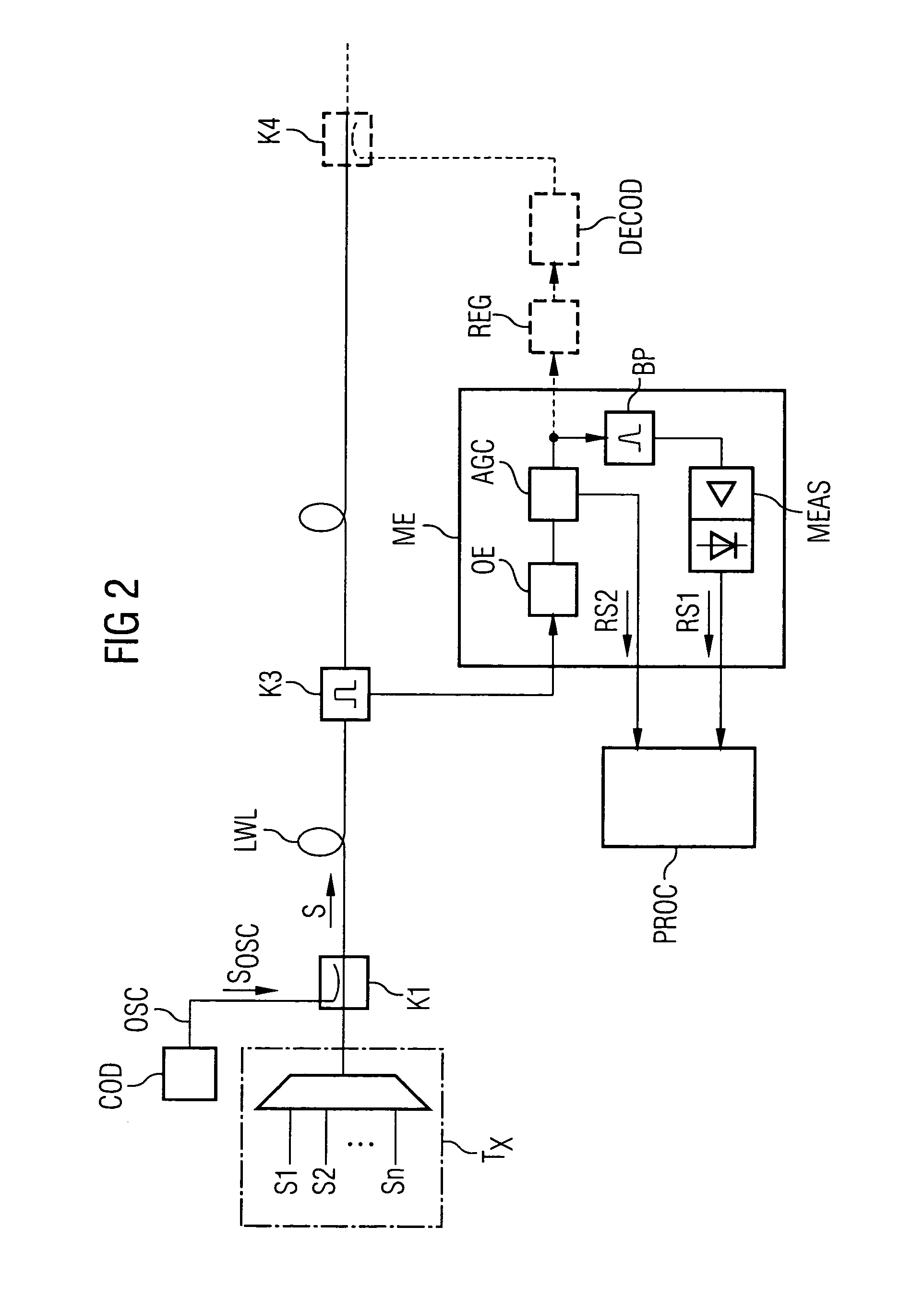Method for detecting a check-back signal in an optical transmission system
a technology of optical transmission system and check-back signal, which is applied in the direction of transmission monitoring, transmission monitoring/testing/fault-measurement system, electrical apparatus, etc., can solve the problems of reducing the signal noise of the check-back signal, affecting the signal, and affecting the signal disadvantage,
- Summary
- Abstract
- Description
- Claims
- Application Information
AI Technical Summary
Benefits of technology
Problems solved by technology
Method used
Image
Examples
Embodiment Construction
[0030]In FIG. 1 there is an illustration of an arrangement for determining a line discontinuity in accordance with the method according to the invention for detecting a check-back signal. Optical signals S1, S2, . . . , Sn are fed from a transmitting unit Tx into an optical waveguide LWL in a transmission system, said signals are intended, for example, as wavelength or polarization multiplex signals. A first coupler K1 is arranged in the first section of the optical waveguide LWL. An encoding module COD is connected in series to the coupler K1, said encoding module encodes a check-back signal SOSC from a monitoring channel OSC of the transmission system in such a way that defined proportion of its output is concentrated in a narrow-band spectral range. To this end, the encoding module has a scrambler with subsequent CMI or RZ encoding. Here the clock frequency of the check-back signal is selected as the centre of the spectral range. In a further section, there are placed a second co...
PUM
 Login to View More
Login to View More Abstract
Description
Claims
Application Information
 Login to View More
Login to View More - R&D
- Intellectual Property
- Life Sciences
- Materials
- Tech Scout
- Unparalleled Data Quality
- Higher Quality Content
- 60% Fewer Hallucinations
Browse by: Latest US Patents, China's latest patents, Technical Efficacy Thesaurus, Application Domain, Technology Topic, Popular Technical Reports.
© 2025 PatSnap. All rights reserved.Legal|Privacy policy|Modern Slavery Act Transparency Statement|Sitemap|About US| Contact US: help@patsnap.com



